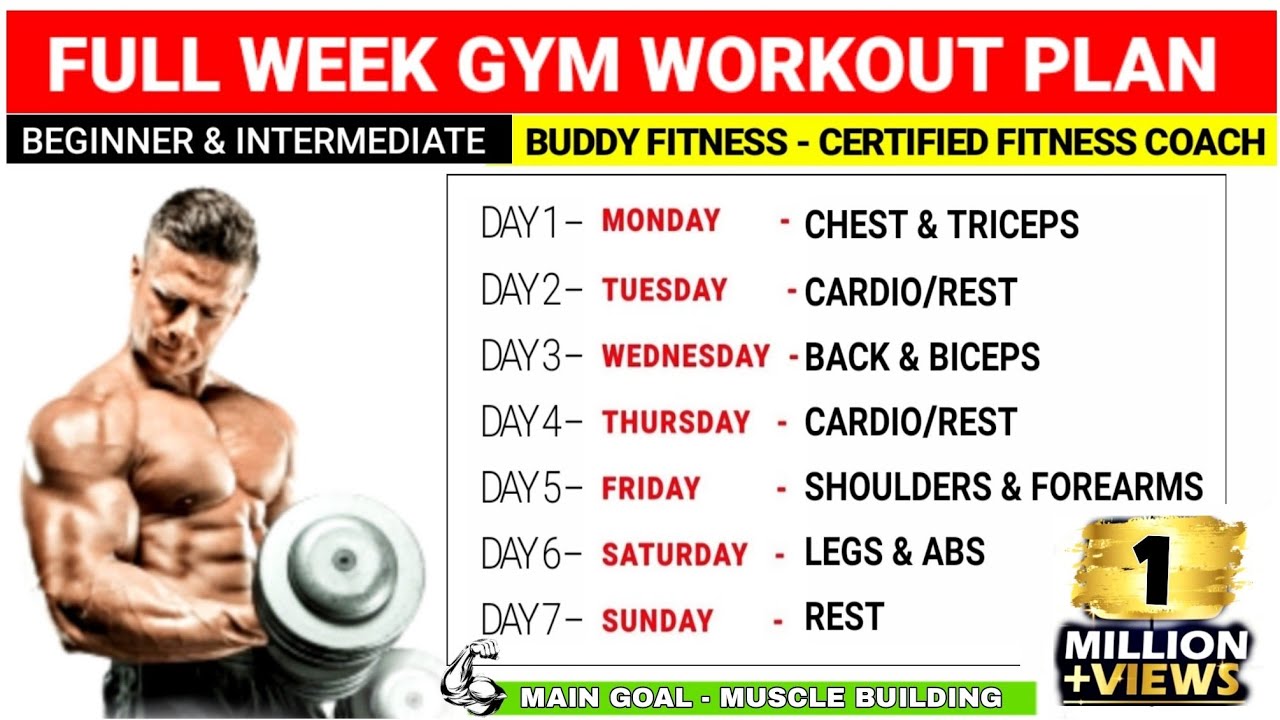How to lose fat and build muscle with weight training for beginners? Sounds like a superhero origin story, right? Forget the magic potion; we’re talking sweat equity, strategic snacking, and the glorious feeling of finally fitting into those jeans you’ve been hoarding. This isn’t about crash diets or grueling marathons; it’s a beginner-friendly journey to a stronger, leaner you, built on solid foundations of exercise and nutrition.
Get ready to sculpt your physique and unleash your inner Adonis (or Aphrodite!).
We’ll break down the basics of fat loss and muscle gain, crafting a 12-week weight training plan that’s as effective as it is doable. We’ll cover the essential exercises, the nutritional fuel to power your workouts, and how to track your progress so you can celebrate those hard-earned victories. Plus, we’ll help you avoid common pitfalls, ensuring you stay motivated and injury-free.
Ready to transform your body and your life? Let’s get started!
Understanding the Basics of Fat Loss and Muscle Gain: How To Lose Fat And Build Muscle With Weight Training For Beginners
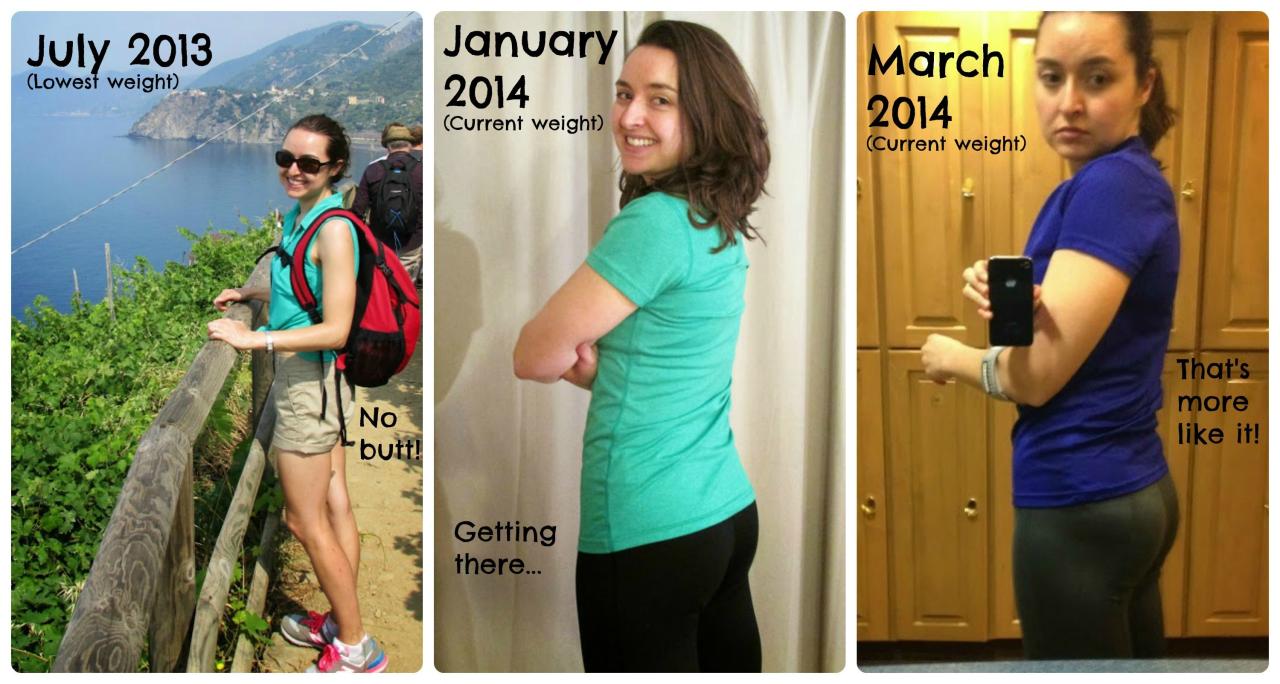
So, you want to sculpt the physique of a Greek god (or goddess, let’s be inclusive!)? Fantastic! But before you start picturing yourself on the cover of a fitness magazine, let’s lay down some fundamental groundwork. Losing fat and building muscle isn’t about magic potions or fad diets; it’s about understanding your body and working with it, not against it.
Think of it as a finely tuned engine – you need the right fuel and the right workout to get optimal performance.The secret sauce to simultaneously losing fat and building muscle (often called “body recomposition”) is a delicious blend of diet and exercise. It’s a bit like a dance – your diet provides the energy, and your workouts choreograph the transformation.
Getting the balance right is key, and it takes time and consistency. There’s no overnight miracle, but the rewards are worth the effort.
Macronutrient Roles in Fat Loss and Muscle Growth
Macronutrients are the big three: protein, carbohydrates, and fats. They’re the building blocks of your body and fuel for your workouts. Think of them as the essential ingredients in your body transformation recipe. Getting the right proportions is crucial.Protein is the muscle-building superstar. It provides the amino acids your body needs to repair and build muscle tissue after your workouts.
Aim for a higher protein intake than someone who isn’t actively trying to build muscle. Think lean meats, fish, eggs, beans, and lentils – the protein powerhouses!Carbohydrates are your body’s primary energy source, especially during intense workouts. They provide the fuel needed to power through your weight training sessions. Choose complex carbs like whole grains, fruits, and vegetables over refined carbs like white bread and sugary drinks.
These complex carbs provide sustained energy, unlike their refined counterparts, which lead to energy crashes.Fats are often misunderstood, but they’re essential for hormone production and overall health. Healthy fats, like those found in avocados, nuts, seeds, and olive oil, are crucial for optimal body function. They help regulate hormones and keep you feeling full, which is important for managing your calorie intake.
Sample Meal Plan for Beginners
Remember, portion sizes are highly individual and depend on your activity level and overall calorie needs. This is just a sample plan – you might need to adjust it based on your specific needs. Consult a nutritionist or registered dietitian for personalized guidance.
| Meal | Food | Approximate Portion Size |
|---|---|---|
| Breakfast | Oatmeal with berries and a handful of nuts, Greek yogurt | 1 cup oatmeal, ½ cup berries, ¼ cup nuts, 1 cup yogurt |
| Lunch | Grilled chicken salad with mixed greens, avocado, and a light vinaigrette | 4-6 oz chicken, 2 cups greens, ½ avocado |
| Dinner | Salmon with roasted vegetables (broccoli, sweet potatoes) | 4-6 oz salmon, 1 cup vegetables |
| Snacks | Fruits, vegetables with hummus, a small handful of nuts | Vary throughout the day |
Remember: Consistency is key! Sticking to a healthy diet and regular workout routine is more important than following a strict, rigid plan that you can’t maintain.
Designing a Beginner Weight Training Program
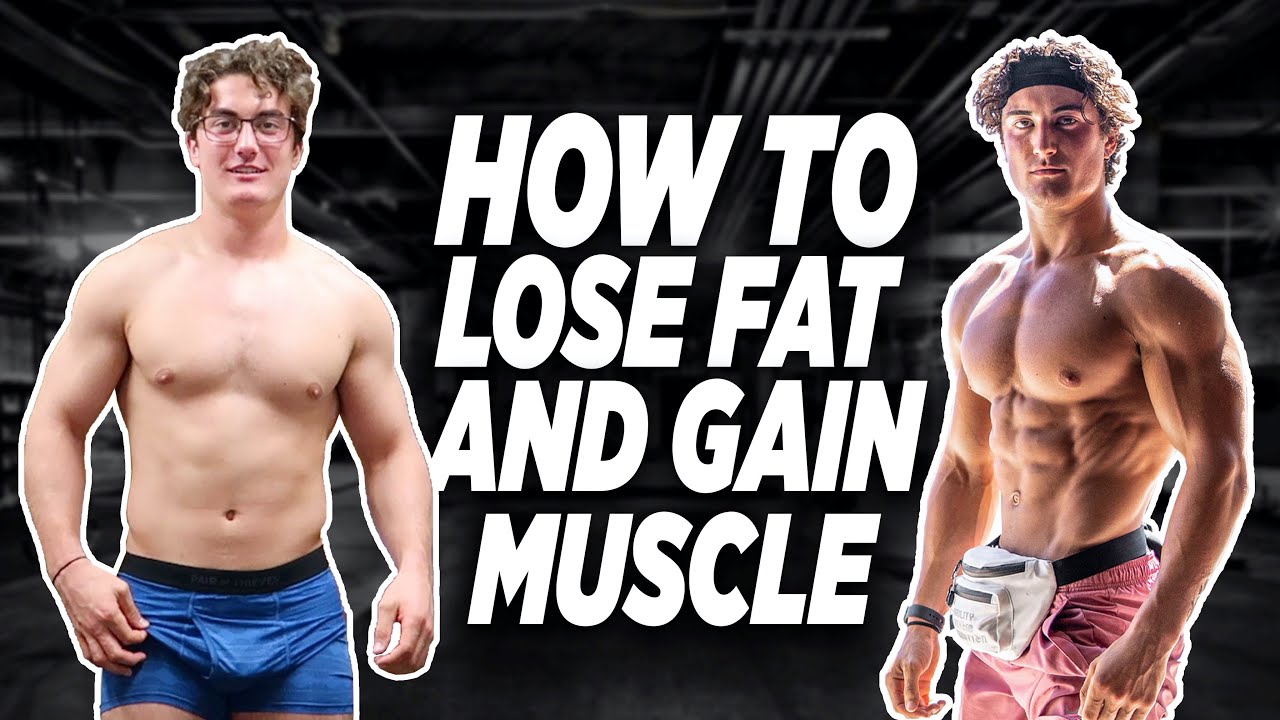
So, you’re ready to sculpt your physique like a Greek god (or goddess, let’s be inclusive!)? Fantastic! But before you start tossing around barbells like you’re in a strongman competition, let’s craft a sensible, beginner-friendly weight training plan. Remember, consistency and proper form are key – not how much weight you lift on day one. We’re building a foundation here, not a skyscraper overnight.This 12-week program focuses on compound exercises – movements that work multiple muscle groups simultaneously – to maximize efficiency and results.
We’ll also incorporate progressive overload, a fancy term for gradually increasing the weight, reps, or sets over time to continuously challenge your muscles and spur growth.
A 12-Week Beginner Weight Training Program
The following table Artikels a sample 12-week program. Remember to listen to your body, rest when needed, and don’t hesitate to adjust the weight or reps based on your individual capabilities. Consistency trumps intensity, especially when starting.
| Day | Exercises | Sets | Reps | Rest (seconds) |
|---|---|---|---|---|
| Monday | Squats, Bench Press, Rows | 3 | 8-12 | 60-90 |
| Tuesday | Rest or Active Recovery (light cardio) | – | – | – |
| Wednesday | Overhead Press, Deadlifts, Bicep Curls | 3 | 8-12 | 60-90 |
| Thursday | Rest or Active Recovery (light cardio) | – | – | – |
| Friday | Squats, Bench Press, Rows | 3 | 8-12 | 60-90 |
| Saturday & Sunday | Rest | – | – | – |
Note: This is a sample program. Adjust based on your individual needs and progress. Consider consulting a fitness professional for personalized guidance.
Proper Form and Technique for Compound Exercises
Proper form is paramount to prevent injuries and maximize results. Think of it like this: sloppy form is like using a rusty wrench – it might
sort of* work, but it’s inefficient and risks damaging the “machinery” (your body).
Squats: Imagine sitting back into a chair, keeping your back straight, chest up, and weight distributed evenly on your heels. Avoid letting your knees cave inward. Deadlifts: Maintain a neutral spine, grip the bar with an overhand or mixed grip, and hinge at your hips, keeping your back straight as you lift. Think of pulling the weight up your legs, not your back.
Bench Press: Lie flat on the bench with your feet flat on the floor. Grip the bar slightly wider than shoulder-width apart, lower it to your chest, and push it back up with controlled movement. Overhead Press: Stand with feet shoulder-width apart, grip the bar slightly wider than shoulder-width, and press the weight overhead, keeping your core engaged and elbows slightly bent.
Rows: Maintain a straight back, pull the weight towards your chest, squeezing your shoulder blades together. Avoid arching your back.
Progressive Overload Strategies
Progressive overload is the engine of muscle growth. It’s all about consistently challenging your muscles to adapt and grow stronger. Here are some ways to achieve this:Increase the weight: Once you can comfortably complete all sets and reps with a given weight, increase it slightly.Increase the reps: If increasing weight feels too daunting, try adding a few more reps per set.Increase the sets: Another way to challenge your muscles is by adding another set to your workout.Vary the exercises: Incorporating new exercises keeps your muscles guessing and prevents plateaus.Remember, consistency is key.
Don’t rush the process, and celebrate your progress along the way! Enjoy the journey of transforming your body and becoming a stronger, healthier you.
Choosing the Right Exercises
So, you’re ready to sculpt your physique like a Greek god (or goddess, let’s not be sexist here!)? Fantastic! But before you start flinging weights around like a caffeinated chimpanzee, let’s talk strategy. Choosing the right exercises is key to maximizing your muscle growth and fat loss, without turning into a walking injury. Think of it as choosing the right tools for the job – you wouldn’t use a hammer to screw in a screw, would you?
(Unless you’re incredibly strong and enjoy the dramatic sound effects.)Compound exercises and isolation exercises are the two main categories we’ll be exploring. Think of them as the powerhouses and the detail artists of the weight training world. Both are important, but understanding their differences will help you build a well-rounded, effective workout routine.
Compound Exercises: The Big Guns
Compound exercises work multiple muscle groups simultaneously. This means more bang for your buck (or, more muscle for your sweat!). They’re incredibly effective for building overall strength, increasing calorie burn, and boosting your metabolism. Imagine a symphony orchestra – compound exercises are the full orchestra, playing a powerful and complex piece of music. Let’s examine three powerhouses:
- Squats: This king of leg exercises works your quads, hamstrings, glutes, and core. Imagine a powerful, graceful lowering and rising motion, like a majestic lion preparing to pounce. Variations include goblet squats (holding a dumbbell or kettlebell close to your chest), front squats (barbell across your upper chest), and sumo squats (feet wider than shoulder-width apart).
Adjust the weight to match your fitness level – start light and gradually increase it as you get stronger.
- Bench Press: The classic chest builder, also engaging your shoulders and triceps. Picture a smooth, controlled press, pushing the weight away from you with power and precision. Variations include incline bench press (working upper chest), decline bench press (working lower chest), and dumbbell bench press (allowing for greater range of motion). Remember, proper form is paramount – avoid bouncing the weight or using momentum.
- Deadlifts: This full-body exercise targets your back, hamstrings, glutes, and forearms. Visualize a powerful lift, engaging your entire posterior chain, like a powerful engine pulling a heavy load. Variations include conventional deadlifts (standard stance), sumo deadlifts (wider stance), and Romanian deadlifts (focus on hamstrings). Start with lighter weight and focus on maintaining a straight back to avoid injury.
Isolation Exercises: The Detail Work
Isolation exercises focus on one muscle group at a time. They are excellent for targeting specific areas and adding detail to your physique. Think of them as the fine brushstrokes that add definition and refinement to a painting. Here are three examples:
- Bicep Curls: This classic isolation exercise targets your biceps. Imagine a smooth, controlled curl, focusing on the contraction of your biceps. Variations include barbell curls, dumbbell curls (hammer curls, concentration curls), and cable curls. Control the movement and avoid using momentum to lift the weight.
- Triceps Extensions: This exercise isolates your triceps. Picture a powerful extension, squeezing your triceps at the top of the movement. Variations include overhead dumbbell extensions, cable pushdowns, and skullcrushers (lying triceps extensions). Maintain a controlled tempo to maximize muscle activation.
- Lateral Raises: This exercise targets your shoulders. Visualize a smooth, controlled lift, focusing on the contraction of your deltoids. Variations include dumbbell lateral raises, cable lateral raises, and front raises. Avoid using momentum and focus on controlled movements.
Compound vs. Isolation: A Beginner’s Guide
Compound exercises are generally recommended for beginners due to their efficiency in building overall strength and muscle mass. They also burn more calories due to the involvement of multiple muscle groups. However, isolation exercises are important for addressing muscle imbalances and adding shape and definition. A balanced approach incorporating both types of exercises is ideal for optimal results.
So, you want to sculpt a physique that would make Michelangelo jealous? Weight training for beginners is your ticket to a leaner, meaner you. But to really torch that fat and build muscle, you’ll need a solid foundation in muscular strength exercises , which will help you push your limits and see results faster. Remember consistency is key – stick with your weight training program and watch those gains happen!
Think of it as building a strong foundation (compound exercises) before adding the finer details (isolation exercises).
Benefits of Compound Exercises for Overall Fitness and Calorie Expenditure
Compound exercises are metabolic powerhouses. They boost your metabolism, leading to increased calorie burning even after your workout is finished. This “afterburn effect” contributes significantly to fat loss. Furthermore, they build overall strength and improve functional fitness, making everyday activities easier and more enjoyable. For example, a strong squat translates to easier climbing of stairs or carrying groceries.
A powerful deadlift helps with lifting heavy objects without straining your back. The benefits extend beyond the gym, making you stronger and more resilient in your daily life.
Nutrition for Fat Loss and Muscle Gain
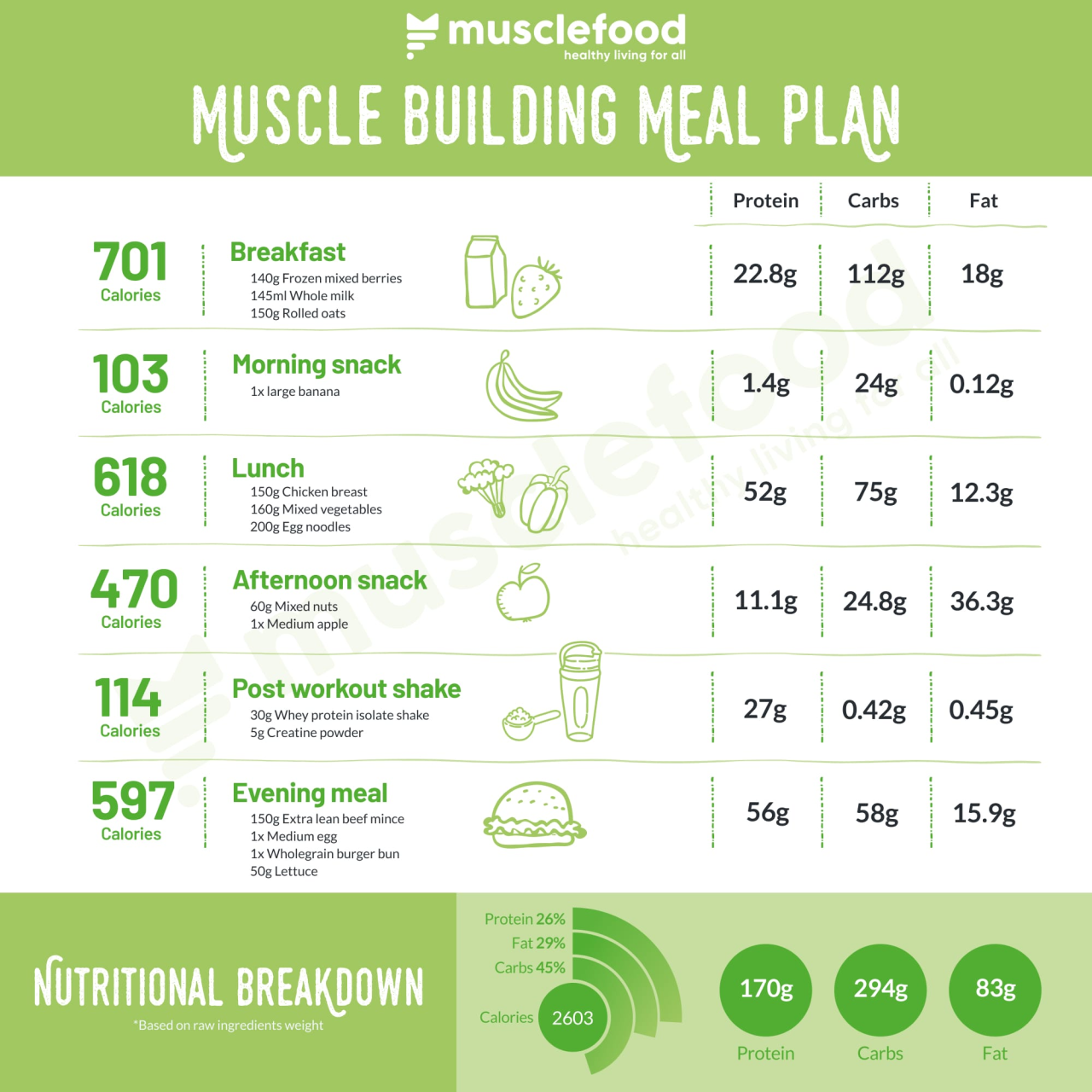
Fueling your body correctly is as crucial to your fitness journey as the workouts themselves. Think of your diet as the high-octane fuel for your muscle-building engine. Without the right nutrients, you’re essentially trying to race a Formula 1 car on regular unleaded – it’s going to sputter and stall. This section will break down the nutritional essentials for achieving your fat loss and muscle gain goals.
Protein Intake for Muscle Growth and Repair
Protein is the undisputed king of muscle building. It’s the building block of muscle tissue, providing the amino acids your body needs to repair and grow stronger after each workout. Imagine your muscles as LEGO structures; protein is the LEGO bricks. Without enough bricks, you can’t build anything substantial. Aim for a daily protein intake of around 1.6-2.2 grams per kilogram of body weight.
For a 70kg individual, this translates to 112-154 grams of protein daily. Good sources include lean meats (chicken, turkey, fish), eggs, dairy products (Greek yogurt, cottage cheese), legumes, and protein powders.
Carbohydrates: The Workout Fuel
Carbohydrates are your body’s primary energy source, especially during intense workouts. They’re like the gasoline in your car; they power your muscles and keep you going. Without sufficient carbs, your energy levels will plummet, leaving you feeling sluggish and unable to perform at your best. Focus on complex carbohydrates such as brown rice, quinoa, oats, sweet potatoes, and whole-grain bread, which provide sustained energy release.
Avoid simple sugars found in processed foods and sugary drinks as they lead to energy crashes and hinder fat loss.
Healthy Fats: Essential for Overall Health and Hormone Production
Contrary to popular belief, healthy fats are essential for overall health and hormone production, playing a crucial role in fat loss and muscle gain. They’re not the enemy; they’re just misunderstood. Healthy fats aid in hormone production, which is vital for muscle growth and fat metabolism. They also help absorb certain vitamins and minerals. Include sources like avocados, nuts, seeds, olive oil, and fatty fish (salmon, tuna) in your diet.
These fats contribute to satiety, helping you feel fuller for longer, which can be beneficial for weight management.
Sample Weekly Grocery List
Planning your meals ahead of time is key to success. This sample grocery list provides a framework for a beginner’s nutrition plan, focusing on whole, unprocessed foods. Remember to adjust portions based on your individual calorie needs and preferences.
| Category | Items |
|---|---|
| Protein Sources | Chicken breast, Salmon fillets, Greek yogurt, Eggs, Lentils |
| Carbohydrate Sources | Brown rice, Quinoa, Oats, Sweet potatoes, Whole-wheat bread |
| Healthy Fats | Avocados, Almonds, Chia seeds, Olive oil |
| Fruits & Vegetables | Broccoli, Spinach, Berries, Bananas, Apples |
| Other | Water, Spices (for flavor!), Optional: Protein powder |
Tracking Progress and Making Adjustments
So, you’ve started your weight training journey – congratulations! But the real fun (and the results) begin when you start tracking your progress. Think of it as a treasure map leading you to your fitness goals. Without it, you’re just wandering around in the gym, hoping to stumble upon a six-pack. Tracking helps you understand what’s working, what’s not, and allows you to make smart adjustments along the way.Progress tracking isn’t just about the number on the scale; it’s a holistic view of your body’s transformation.
We’ll explore different methods to monitor your journey, identify roadblocks, and stay motivated.
Methods for Tracking Weight, Body Measurements, and Strength Gains
Tracking your progress involves more than just stepping on a scale every morning. While weight is a factor, it doesn’t tell the whole story. Changes in body composition – the ratio of muscle to fat – are crucial. Regularly recording your weight, along with other measurements, paints a more complete picture.
- Weight: Weigh yourself once or twice a week, at the same time of day, wearing similar clothing. Consistency is key here. Don’t get discouraged by minor fluctuations; focus on the overall trend.
- Body Measurements: Use a measuring tape to track changes in your waist, hips, chest, and thighs. These measurements are often more sensitive to changes in body composition than weight alone. For example, you might see a decrease in waist circumference even if your weight remains relatively stable, indicating fat loss.
- Strength Gains: Keep a training log to record the weight you lift, the number of repetitions, and the number of sets for each exercise. This allows you to monitor your progress over time and identify areas where you’re getting stronger. For example, if you could only bench press 100 pounds for 8 reps last week, but now you can do 105 pounds for 10 reps, that’s progress!
Identifying and Addressing Plateaus
Hitting a plateau – where your progress seems to stall – is completely normal. Your body adapts to your training, and to continue seeing results, you need to challenge it.Identifying a plateau involves consistently monitoring your progress. If your weight, measurements, and strength gains haven’t improved for several weeks, despite consistent effort, it’s time to make adjustments.Here are some strategies:
- Increase training volume: Gradually increase the number of sets, reps, or exercises you perform.
- Increase training intensity: Lift heavier weights, use more challenging exercises, or decrease rest periods.
- Change your routine: Introduce new exercises to target different muscle groups or incorporate different training styles (e.g., high-intensity interval training).
- Review your nutrition: Ensure you’re consuming enough protein, calories, and micronutrients to support muscle growth and fat loss.
- Get enough rest: Muscle growth and recovery happen during rest. Aim for 7-9 hours of sleep per night.
Strategies for Maintaining Motivation and Overcoming Challenges
Staying motivated during a fitness journey requires a multifaceted approach. It’s not always smooth sailing, and setbacks are inevitable.
“Consistency is key, but flexibility is crucial.”
- Set realistic goals: Don’t try to transform your body overnight. Set small, achievable goals that you can build upon over time. For example, instead of aiming for a 20-pound weight loss in a month, aim for 2-3 pounds per week.
- Find a workout buddy: Having a friend to work out with can provide motivation and accountability.
- Reward yourself (healthily!): Celebrate your milestones with non-food rewards, such as a new workout outfit or a massage.
- Don’t be afraid to ask for help: If you’re struggling, don’t hesitate to reach out to a personal trainer or a healthcare professional.
Modifying the Program Based on Individual Progress and Limitations, How to lose fat and build muscle with weight training for beginners
Your weight training program should be tailored to your individual needs and abilities. It’s not a one-size-fits-all approach. Regularly assess your progress and adjust accordingly.For example, if you find an exercise particularly challenging or painful, modify it or replace it with a similar exercise that’s more suitable for your current fitness level. If you’re progressing rapidly, you might need to increase the weight, reps, or sets to continue challenging your muscles.
Conversely, if you’re struggling to keep up, you may need to reduce the intensity or frequency of your workouts. Listen to your body; it’s your best guide.
Rest and Recovery
Building muscle and shedding fat isn’t just about the sweat sessions; it’s about giving your body the downtime it craves to rebuild and recharge. Think of your body as a finely tuned sports car – you wouldn’t expect it to perform at its peak without regular maintenance and rest, would you? Neglecting rest is like driving that sports car full throttle without ever changing the oil; eventually, it’ll sputter and break down.
So, let’s dive into the crucial role of rest and recovery in your fitness journey.Sufficient sleep is the cornerstone of muscle recovery and overall well-being. While you’re hitting the weights, your muscles are undergoing microscopic tears. During sleep, your body diligently repairs this damage, building stronger, bigger muscles in the process. Lack of sleep hinders this process, leaving you feeling sluggish, weaker, and more susceptible to injury.
It also messes with your hormones, impacting your appetite and potentially sabotaging your fat loss goals. Think of sleep as your body’s secret muscle-building potion!
The Importance of Sleep for Muscle Recovery and Overall Health
Getting enough sleep isn’t just about feeling rested; it’s crucial for optimal muscle growth and repair. During deep sleep, your body releases growth hormone, a vital player in muscle protein synthesis. This is the process where your muscles rebuild and grow stronger after a workout. Insufficient sleep reduces growth hormone production, hindering muscle growth and recovery. Aim for 7-9 hours of quality sleep per night.
Consider establishing a regular sleep schedule, creating a relaxing bedtime routine (perhaps a warm bath or some calming reading), and ensuring your bedroom is dark, quiet, and cool. Think of it as investing in your gains; a good night’s sleep is the best pre-workout supplement you can get.
Active Recovery Methods
Active recovery isn’t about another grueling workout; it’s about gentle movement that promotes blood flow, reduces muscle soreness, and aids in recovery. Light cardio, such as a leisurely walk or a gentle bike ride, is a great option. Think of it as flushing out metabolic waste products from your muscles. Stretching also plays a crucial role, improving flexibility and range of motion, preventing stiffness and injury.
A simple 15-20 minute stretching routine after your workouts can make a world of difference. Imagine your muscles as tangled fishing lines; stretching helps untangle them, allowing for smoother, more efficient movement.
Signs of Overtraining and Prevention Strategies
Overtraining is a serious issue that can derail your progress and lead to injury. Signs include persistent fatigue, decreased performance, increased resting heart rate, and mood changes (irritability, depression). If you notice these symptoms, it’s crucial to dial back your training intensity and volume. Prioritize rest and recovery, and consider consulting a healthcare professional or certified personal trainer.
Remember, progress isn’t linear; it’s okay to take rest days. Think of it as strategic retreat, not defeat. A well-planned training schedule that incorporates rest days and active recovery is essential to prevent overtraining. It’s better to take a break and come back stronger than to push yourself to the point of injury.
Sample Sleep Schedule and Active Recovery Routine for Beginners
A sample sleep schedule might involve going to bed at 10:00 PM and waking up at 7:00 AM, providing 9 hours of sleep. A sample active recovery routine could include a 20-minute walk on your rest days, followed by 10-15 minutes of gentle stretching focusing on major muscle groups. Remember to listen to your body and adjust the intensity and duration of your active recovery based on how you feel.
Consistency is key, but flexibility is equally important. Your body will thank you for it! This is not a rigid prescription; adapt it to your own schedule and preferences.
Common Mistakes to Avoid
So, you’ve embarked on your fitness journey – kudos to you! But even the most enthusiastic beginners can stumble. Avoiding these common pitfalls will save you time, frustration, and maybe even a few injuries. Think of this section as your personal cheat sheet to a smoother, more successful workout experience.Ignoring proper form in pursuit of heavier weights is a recipe for disaster.
Many beginners prioritize lifting the maximum weight they can manage, often sacrificing form in the process. This not only reduces the effectiveness of the exercise but also significantly increases the risk of injury. Remember, slow and steady wins the race, especially when it comes to building muscle and avoiding pulled muscles!
Improper Form and Technique
Prioritizing proper form over lifting heavy weights is crucial for preventing injuries and maximizing muscle growth. Imagine trying to build a house with crooked bricks – it’s not going to stand! Similarly, poor form compromises the effectiveness of each exercise, hindering your progress. Start with lighter weights, focusing intensely on maintaining correct posture and movement patterns. Consider working with a trainer initially to learn proper form for each exercise.
This investment in your knowledge will pay dividends in the long run. Remember, quality over quantity!
Ignoring Nutrition
Nutrition is the fuel that powers your workouts and recovery. Many beginners underestimate the importance of a balanced diet rich in protein, complex carbohydrates, and healthy fats. Without adequate nutrition, your body simply won’t have the building blocks it needs to build muscle and burn fat. Think of it like trying to build a car without the necessary parts.
It just won’t work. Ensure you are consuming enough calories to support your activity level and muscle growth.
Lack of Consistency and Patience
Consistency is key, yet many beginners fall prey to sporadic workout routines and unrealistic expectations. Building muscle and losing fat takes time and dedication. Think of it as a marathon, not a sprint. Aim for a sustainable workout routine that you can stick with long-term, even if it means starting small. Celebrate small victories and remember that progress, not perfection, is the goal.
Don’t get discouraged by slow initial progress – consistency will eventually lead to noticeable results.
Neglecting Rest and Recovery
Your muscles need time to repair and rebuild after a workout. Ignoring rest and recovery can lead to overtraining, hindering progress and increasing the risk of injury. Aim for at least one or two rest days per week, allowing your body to recover fully. Adequate sleep is also crucial for muscle growth and overall well-being. Think of sleep as your body’s repair shop – it needs time to do its work.
Lack of Time or Access to Equipment
Limited time or access to a gym shouldn’t be an excuse for neglecting your fitness goals. Bodyweight exercises are incredibly effective and require no equipment, allowing you to work out anywhere, anytime. Even short, high-intensity workouts can be highly effective. Remember, even 15 minutes of exercise is better than none. Consider utilizing online workout videos or apps for guidance and motivation.
Ignoring Your Body’s Signals
Pain is your body’s way of telling you something is wrong. Ignoring persistent pain can lead to serious injuries. If you experience pain during a workout, stop immediately and rest. Don’t push through the pain – it’s not worth it. Listen to your body and adjust your workout accordingly.
Remember, rest days are essential for recovery and preventing injury.
Final Wrap-Up
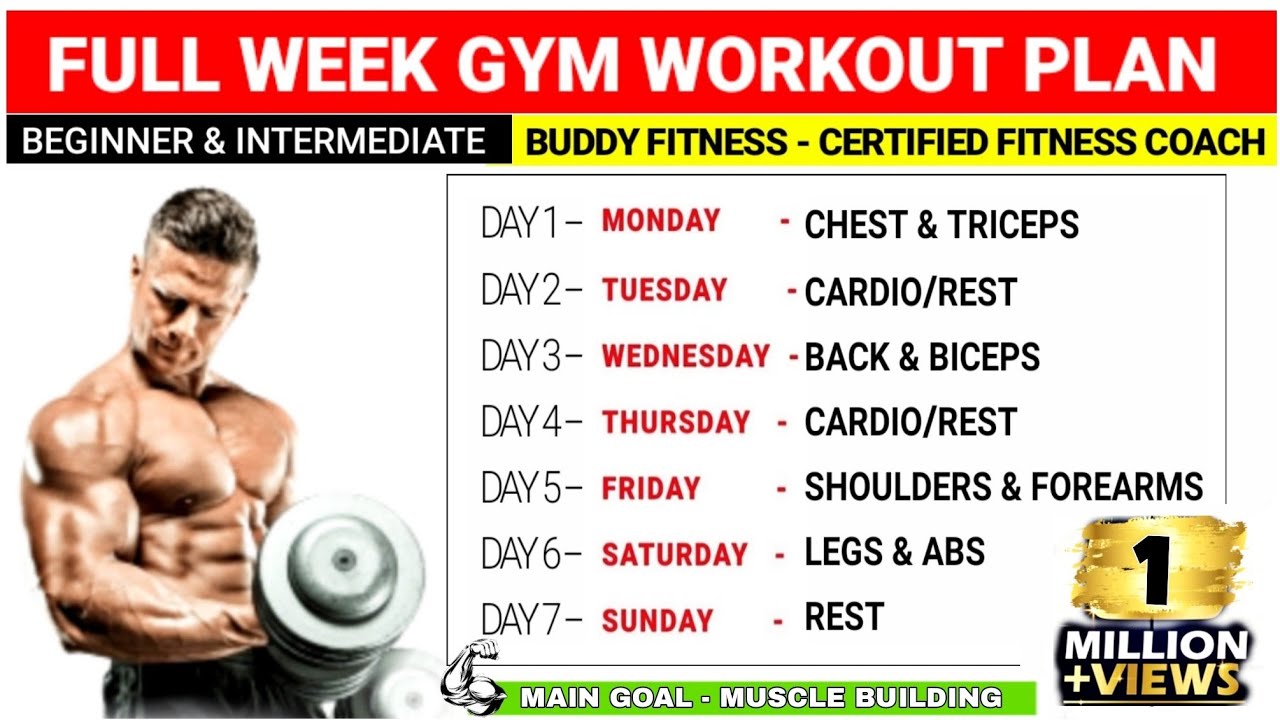
So, there you have it – your roadmap to a fitter, stronger you! Remember, consistency is key. Don’t be discouraged by setbacks; view them as opportunities to learn and adapt. Celebrate your progress, no matter how small, and enjoy the incredible journey of transforming your body and boosting your confidence. Now go forth and conquer those weights (and those cravings!).
You got this!
